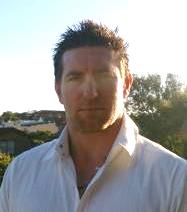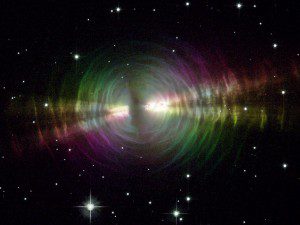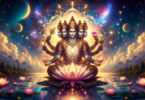Guest Writer for Wake Up World
I am an ‘ordinary’ native, yet for near half of my life I have experienced an extraordinary interconnection with the external world. Some might call it spirituality, others might call it being tapped in and some simply classify it as religion or the paranormal. In fact the blurring of the lines between one person’s mind and the rest of reality has been called many things by many cultures and traditions who have attempted to explain it over the course of humanity’s history.
No matter what you call this world-wide and timeless phenomenon, most people have personally had extraordinary experiences, too.
Some obvious examples include: thinking of someone not heard from in a long time and then running into or receiving a phone call from them; knowing information intuitively which turns out to be true; feeling a loved one’s pain or knowing something is wrong when they sustain a serious injury or in unfortunate circumstances pass away; telepathic experiences between close friends or family members, particularly twins; out-body-experiences (OBEs); near-death-experiences (NDEs); deep meditation; psychedelic expansion; and having an experience such as a dream or premonition before it eventuates in the future.
Examples of less intensity can include: having a feeling of being watched only to turn around and catch out someone looking at them; having a conversation about a concept which then eerily happens to occur within their immediate future; knowing what another person is going to say next even if they don’t know them; having strong emotion or thought which then continues to be mysteriously reflected around them in their experience, such as through music, movies, conversations etc.; having a series of experiences over a short period of time that are relevant to a particular theme in a person’s mind; experiences which occur with such precise timing that it feels uncanny in nature; and ongoing moments of external reflections which seem ordered and interrelated to the context of internal thoughts and feelings.
Subjective World vs. Objective World
I have a normal nine-to-five job working with kids and families fulfilling a myriad of therapeutic roles, and I have come from a background consisting of many identities and robust experiences. Yet I’m just like every other person in the sense that I want to find the meaning to life. We are currently working it out in the context of the two dominating metaphysical theories of reality, although I admit what follows is a layman account of this debate.
On one side there is the scientific orthodox view that the objective world of matter is the primary stuff of reality, which is inherently inert and purposeless (usually a form of Materialism), or that something else is primary, mostly described as Ideas, Phenomena, Mind or God (usually a form of Idealism or Phenomenalism). In our current era both views are generally assumed to be Monistic (i.e. there is only one fundamental thing) contrasted to the philosophy of Dualism (there are two distinct fundamental things).
Anyone who is aware of this divide (which I believe is one of the most important debates of humanity’s history) will know that there is a justifiable focus on scientific evidence, most notably the quantum sciences. As time progresses, evidence is accumulating from many scientific disciplines in complex and sometimes more mysterious ways, and in many cases greater questions than answers have been generated.
There is also a momentum of interest from many layman layers of society and it has even reached the point where either-side fundamentalists have resorted to abusive, arrogant and condescending tactics under the assumption that their point of view is correct.
But the fact remains that this question has not been concretely solved with both philosophical examination and scientific evidence, and therefore in that context the debate continues to remain open. It is in fact argued that it may never be solved due to the incapacity of the human mind or that it would take a scientific paradigm shift to begin to truly answer the question.
I should mention that there is philosophical and scientific justification for rejecting the materialist philosophy of reality, in part because the validity and nature of the subjective world defies explicability. In any case, I contextualise this debate because it is important given the personal interconnected experience many people live as their reality. I don’t, however, want to get too caught up in this ancient and incomplete debate as we only have so much time to live, and live well, so let us shift our focus.
There are many people watching this arm wrestle whilst entertaining a similar question: if there is an interconnecting principle which unifies the subjective and objective worlds as the true nature of reality, what could that essence be?Let’s assume for a moment there is an interconnecting principle: then what does that mean for the individual person’s life? Clearly most people aren’t experiencing mind-blowing phenomena every day of their lives, so if there is an essence which validates and interconnects both the subject and the object, then what does that mean for our practical day to day experience? And if it is true, then how could those people who don’t currently believe it be convinced that it is, not just via philosophical endeavour and scientific evidence, but through their own subjective experience?
It is here that we have arrived at the basis of this article: this is my layman account of many years experiencing interconnection in my daily life.
The Tool of Symbolism
Many moons ago, as a young man, I began to entertain questions like: “the universe is either doing nothing or something, yet what is it doing nothing or something within?” Nowadays it is mostly agreed that the universe is not just expanding but also accelerating due to a force coined dark energy. Yet the question still stands, where is the universe? Still back in the haze, I once asked myself: “In one word, what is the meaning of life?” My answer was “growth,” because everywhere I looked everything appeared to be changing and becoming something else.
Many areas of reality also seemed to have a natural or purposeful urge to grow and in some cases it would continue that path until it could not grow any further. Examples I considered were myself, collective knowledge, technology, culture, humanity, the biosphere and the universe, and my consciousness itself; it was all becoming its new self in each new moment.
So, I concluded that a major aspect of understanding reality was to understand my new self in each moment so that I could consciously accelerate my growth into the next. Suddenly I had meaning and purpose.
Even with such mind bending questions, I still upheld a disconnected view of my relationship to the universe. Ironically, I was experiencing something externally equal to not just my actions, but also my thoughts, which ultimately triggered my focus on interconnection.
Yet due to a lack of experience, I hadn’t considered that the internal and external could be intimately the same.
It took a particularly open-minded and intuitive former partner in crime, who in retrospect turned out to be wise beyond her years (like she always hinted), as a reflection which encouraged a serious pursuit to understand what this meant. She taught me about love and magic and even though I didn’t at that time believe in magic, what was apparent, with even more amplification and momentum after our relationship split, was that these strange coincidences were staying for good.
I asked myself: “How is it possible that the outside of me could reflect what was going on inside my head?” This attractive force had consistent experiential results and was the basis for both my rational and intuitive quest to understand what was really happening with reality itself.
So off I was on my journey, alone and confused, but armed with love. Although I was open-minded I was still a critical sceptic; I wanted the truth after all. So, based on controversial but seemingly significant connections—the ‘equal’ themes and patterns in my unfolding experience that were increasingly hard to ignore—I started with the theory that “this is most probably all in my own head.”
It was at first clear that I needed to determine what the chance was that these interconnecting experiences could occur. I thought something like: “Okay the chance of that internal concept manifesting in external experience is about 1000 to 1.”
Soon I realised that these experiences were evolving with each other. I then conceived: “Well, calculating that a is in relation to b which is in relation to c, the chance of that happening is somewhere around 1 million to 1.”
Even though these calculations were favourably sceptic, after many critiques over many months and years I realised I was regularly reaching a mathematical guesstimate so inconceivable that the only rational and intuitive answer was that the chance of the outcomes being this perfectly ordered was Infinity to 1.
Ultimately, there was a war in my mind where synchronicity deposed coincidence.
It was through this process where I had the epiphany that I was never the outside world, I was never only material stuff, and I was never anything else but a subject interconnecting with objective things; they were one and the same thing.
Therefore, I concluded that the fundamental nature of reality gives rise to the internal and external worlds and that neither mind nor matter are primary as they’re both reflections of what truly is. Many people today simply call it consciousness, although there is a potential to get confused as consciousness in this context refers to the oneness of both the subjective mind and the objective world of physical things. It is in this light that I simply call it equalism–that is, the reality that mind and matter are equal to each other.
Through analysing the information in my mind, I uncovered that interconnections shed light through symbolism, or more specifically, the interpretation of how external symbols related to the context of my subjective world.
Simply, symbols reflected an array of information in my daily experience which interconnected with my mind. They came in many forms such as words, animals, shapes, colours, sounds and basically anything in the external world that represented a pattern and flow relating to the concepts and themes I was experiencing in my thoughts.
Day after day, year after year I would experience symbols of interconnection, partly realised due to their impeccable timing, yet much of the time I would only just glimpse a true understanding of them. I would try to predict what they meant for my future but it became a time-wasting affair because I realised I was not fully living in that present moment where I had the opportunity to freely create my future. Retrospect then became a very empowering tool to efficiently place the past in its appropriate mental space.
The more I used this tool and focused on these bizarre synchronistic symbols, the more they would reveal themselves to me in both meaningful and humourous ways. This comedic characteristic almost blinded me with the lesson of “Lighten up!” However, most commonly they were simply reflections of subtle linkages of information, so I eventually lost the sense of shock, accepted it as a phenomenon of experience and just surfed their flow.
Yet, with absolute precision, synchronicities would consistently manifest in such a profound way that it once again blew my mind and holistically reinforced whatever I was learning in that moment. I couldn’t even work out at this point if it was me or something else in control, so I would just think: “Yeah, hilarious God.”
After some time they began to happen almost instantaneously—I would entertain an idea and that concept would magically materialise in the world around me soon after (a now common experience for me).
The acceleration of the resonance between my inside and outside worlds brought to light that I was, in a neuroplasticity sense, rewiring my brain to be more attuned to having these experiences.This again led to the question of whether it was real—does the brain generate consciousness like an electricity generator or does it tune into consciousness like a TV set tunes into particular frequencies of information?
Logically, if the truth is that the brain generates my mind, then I’m experiencing an illusory mindset which is only within the parameters of my physical self. Yet, if the brain truly receives or filters what I experience as consciousness (the subject and object), then I’m creating something real within whatever the interconnecting fabric is.
Materialists arrogantly claim that the brain generates human consciousness because it is changed when the brain is damaged. But if you damage a TV set or change it in some way, it alters the way that the signals are received without having any impact on the signals themselves. So the fact that the brain state is correlated to particular states of consciousness does not definitely prove that the brain generates our consciousness.
Even though there is no scientific agreement on the answer to this question, I am confident that the TV set analogy theory will eventually be evidenced which will be a vital piece of the reality jigsaw which is needed to put the big picture into the mind’s eye of the scientific orthodoxy.
Uniting Science and Spirituality
Because of this deliberation, I had once again arrived at the Objective World versus Subjective World debate. For the masses, the confusing part of this stand-off is that the primacy of matter has basically been equated with Science (which is an unproven union) and the primacy of mind has been equated with Spirituality and Religion, unjustly contrasting the concepts of Science and Spirituality.
It has also had a devastating impact on the collectives’ understanding of terms such as God, spirituality, and even the word consciousness itself. Due to many reasons, especially through fraud, misconception and misunderstanding, these terms have been corrupted and tainted in society and now there’s even a hard-core pop debate between Atheism and Religion because so many people have an idea of God that is backwards—i.e. that God is outside of us and “He” should have the power to impede the free choice of sentient beings when that choice is hurting others (which is contradictory to the innate parameters of the concept of freedom).
Another concerning aspect, however, is that the phrase Science verses Spirituality is incorrectly used synonymously with Atheism versus Religion. The latter are generally defined as fundamentally different concepts, because Atheism is often equated with Materialism, and Religion with Idealism, although this is not necessarily the case.
Atheism—the non-belief in God—could still be equalistic in terms of what the universal principle turns out to be. Just because the oneness of the subjective and objective worlds is the fundamental basis of reality does not imply that it reflects the concept an Atheist has of God. Let’s remember that there are many religions all with a different definition of the concept of God, although one premise seems to be clear no matter which religion you ask—God is the source of everything.
So, from a scientific perspective, you might call God the zero-point energy field or the quantum field of possibilities. In addition, spirituality has no fixed conception of God, it appears to be a very personal relationship with what’s considered the divine source of everything.
So, from a spiritual standpoint, you might say that One or consciousness is God.
Regardless, there is growing agreement across many fields of thought that there is an all-pervading essence. There are many different terms to describe this, such as: Energy; Mind; Consciousness; Light; Love; Spirit; the Source; the Field; the Akashic Field; the Zero-point Energy Field; Quantum Field of Possibilities; the Collective Unconscious; Undivided Wholeness; One; God; Equalism, etc.
With all due respect, it doesn’t matter what you call it, it’s a term which refers to the universal whole—we all have our own word for it so why waste time debating anyone else’s preference? How this inseparability is described and what it is capable of is another story, but we should at least get on the same page and then debate what it means and how to utilise it practically for the individual and humanity as a whole.
Therefore, in this respect, Science, Spirituality, Atheism and Religion could all potentially align to an equalistic vision of reality.I, among countless others, believe that true Science, which is the systematic study of pure reality, is also complementary to true Spirit, pure reality; they’re two sides of the same coin. Even though Science is currently limited in its understanding and technological capacity, and the leading metaphysics (i.e. Materialism) attempting to explain the scientific evidence has more or less failed, many people still believe that the scientific method is capable of explaining the pure reality of both the subjective and objective worlds.
As a necessary tangent, evolution is the leading but unproven theory for how life has evolved on this planet based on the idea of Natural Selection and Physiological Mutations. But, if so, was it because of random mutation or non-random design? If you consider the mathematical probability that random mutations are the sole reason that life did and continues to evolve on this planet then you’ll understand it’s such an astronomical number that random mutations cannot fully explain the initiation of life and the process of evolution.
Essentially, there is a non-random factor guiding evolution. Intelligent design proponents rely on God and Neo-Darwinist, and Materialist proponents continue to blindly state that it is just a random outcome. But why can’t it be that life, which is so far inexplicable to modern science, is inherent in the fundamental nature of reality? Why can’t animal life design its own evolution purely because of its will to survive and thrive? And if so, how is that possible?
As you might have guessed, a potential mechanism to the non-random nature of evolution involves consciousness itself. Consciousness is a mysterious phenomenon of human reality and is one of the most difficult aspect to explain scientifically; think about it, the most natural and obvious aspect of being alive is that we’re conscious, yet materialistic science has no idea what it actually is and why physical things can be conscious at all.
So let’s just assume for a moment that it is consciousness which drives evolution: would a species which is designing its mutations to be more likely to survive and thrive need to be conscious of this process or could it all be done subconsciously? Could it be a form of collective consciousness? Or could it be that consciousness (i.e. the subject and the object) is what life and reality is fundamentally made of?
Previous articles by Phillip J. Watt:
- The Ego is the Source of Suffering AND Contentment
- The Orchestra of Reality – a Journey through Science, Spirituality & Symbolism
- 8 Emotional Patterns That Can Disturb Our Inner Peace
- 8 More Emotional Patterns That Can Disturb Our Inner Peace
- Finding Our Peace: The Art of Loving Our Experience
- A Day in the Life of Mindfulness
- The New Age of a United Global Culture
- A Guide to Unity: Transcending the Illusion of Disconnection
- Permaculture – What Is It and Why Is It Important?
- Matter vs. Spirit – A Guide to Participating in the Greatest Debate Ever
About the author:
 Phillip J. Watt lives in Sydney, Australia. He identifies as a ‘self-help guide’ as he has long focused on his physical, mental, emotional and spiritual health and then shares those lessons with his clients and readers. His written work also deals with topics from ideology to society, as well as self-development.
Phillip J. Watt lives in Sydney, Australia. He identifies as a ‘self-help guide’ as he has long focused on his physical, mental, emotional and spiritual health and then shares those lessons with his clients and readers. His written work also deals with topics from ideology to society, as well as self-development.
Phil has a degree in Social Science and Philosophy and has been trained extensively in health services. He assists adults, children and families as a mentor, relationship mediator and health and life teacher. He also provides online support services for personal healing and growth, assisting his clients to grow their skills and knowledge in life management and adventure.
Follow him on Facebook or visit his website www.vitalityguidance.com where you can reach him for a personal appointment.

If you've ever found value in our articles, we'd greatly appreciate your support by purchasing Mindful Meditation Techniques for Kids - A Practical Guide for Adults to Empower Kids with the Gift of Inner Peace and Resilience for Life.
In the spirit of mindfulness, we encourage you to choose the paperback version. Delve into its pages away from screen glare and notifications, allowing yourself to fully immerse in the transformative practices within. The physical book enriches the learning process and serves as a tangible commitment to mindfulness, easily shared among family and friends.
Over the past few years, Wake Up World has faced significant online censorship, impacting our financial ability to stay online. Instead of soliciting donations, we're exploring win-win solutions with our readers to remain financially viable. Moving into book publishing, we hope to secure ongoing funds to continue our mission. With over 8,500 articles published in the past 13 years, we are committed to keeping our content free and accessible to everyone, without resorting to a paywall.







